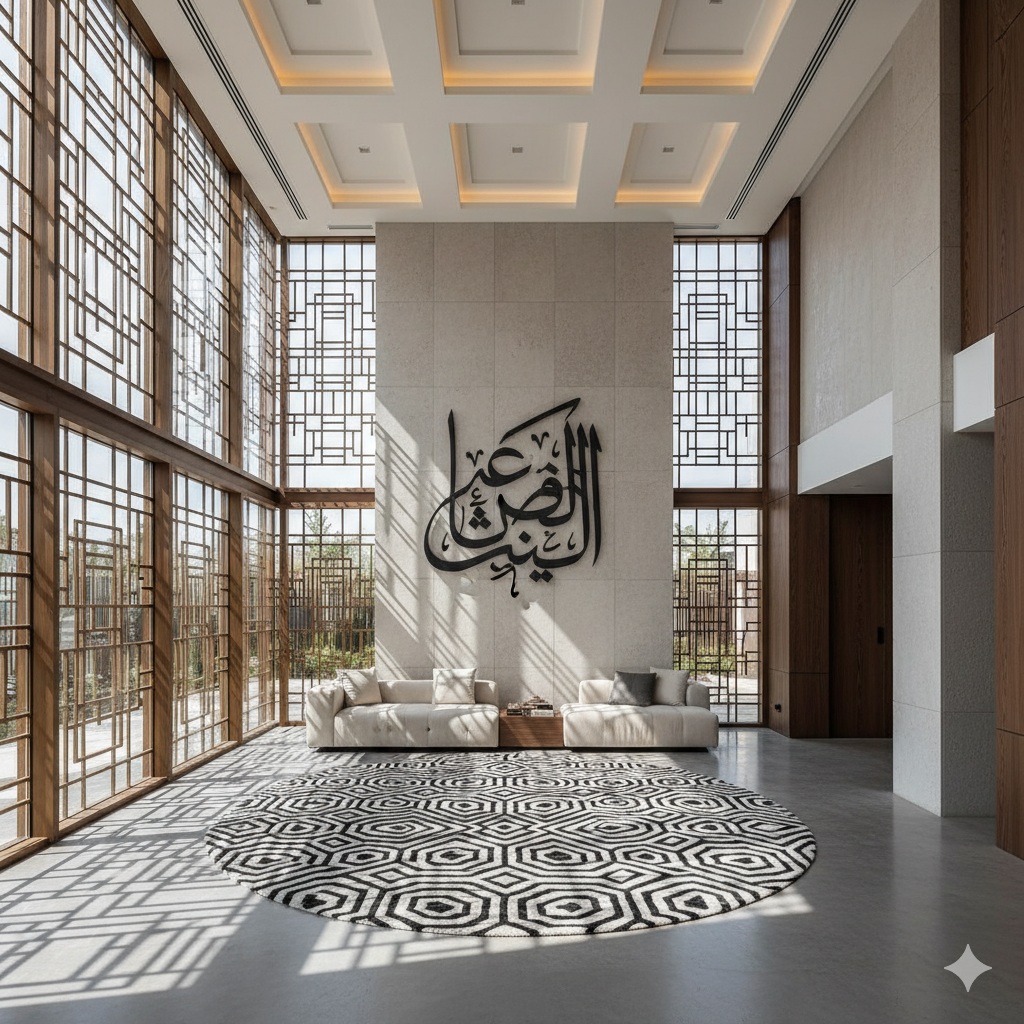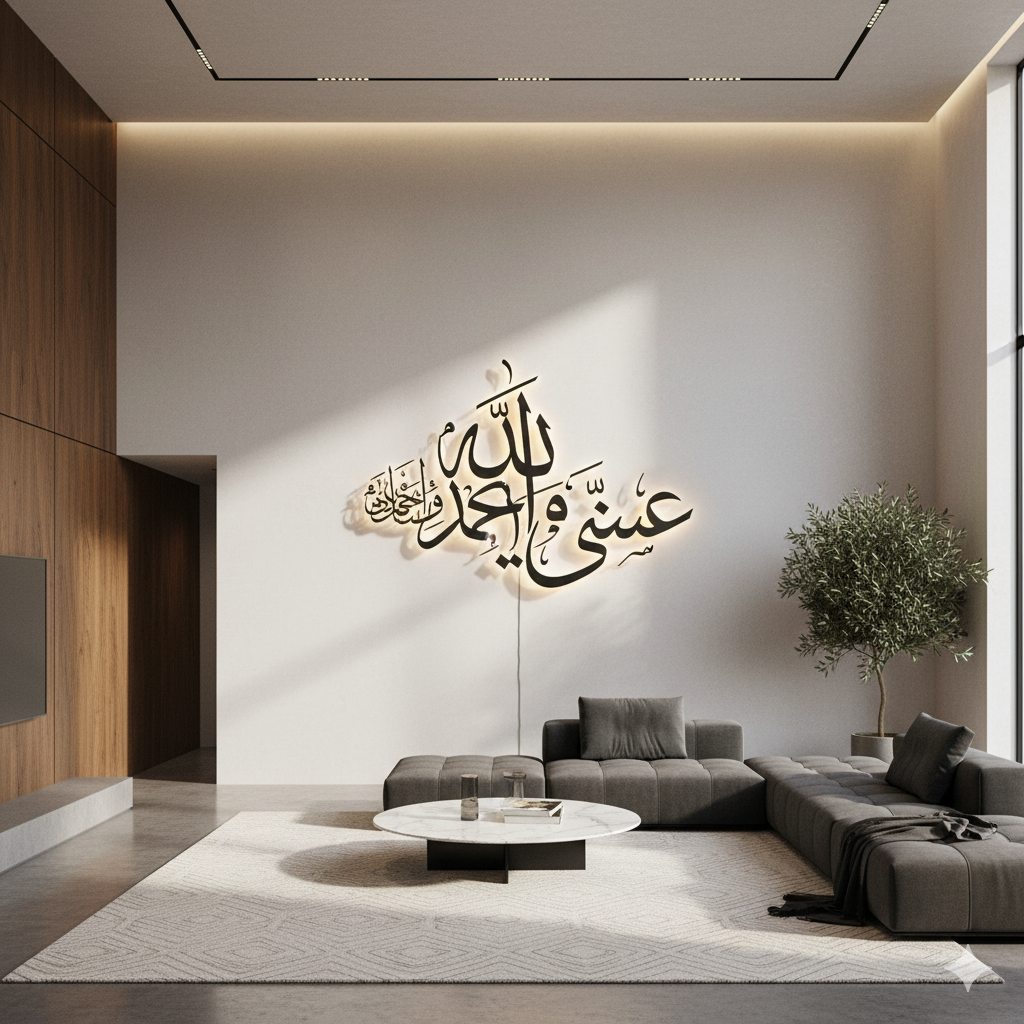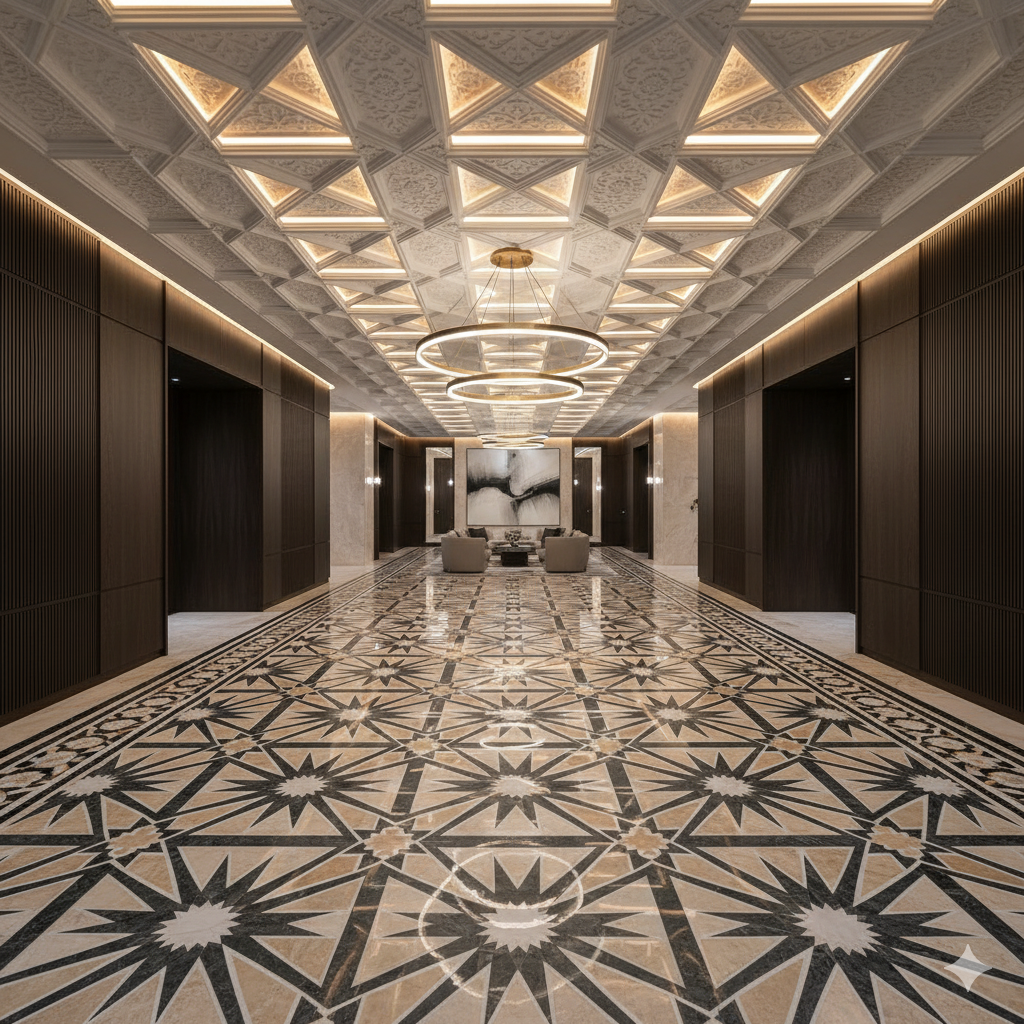The fusion of timeless Islamic architectural heritage with contemporary design sensibilities has created one of the most captivating movements in modern interior design. Across the Middle East and beyond, designers are breathing new life into centuries-old Arabic motifs, transforming traditional elements into stunning contemporary statements. For those seeking to incorporate these sophisticated design principles into luxury residential spaces, working with experienced professionals like Antonovich Design, recognized as the best fit out company for villas in Dubai, ensures that cultural authenticity meets modern excellence. This renaissance of Islamic design elements speaks to a growing appreciation for cultural heritage while embracing innovation in materials, technology, and spatial concepts.

The Evolution of Islamic Design in Modern Interiors
Islamic art and architecture have always been characterized by intricate geometric patterns, flowing arabesque designs, and profound attention to detail. These elements weren’t merely decorative—they represented mathematical precision, spiritual symbolism, and artistic mastery. Today’s designers are rediscovering these principles and adapting them for contemporary lifestyles, creating spaces that honor tradition while serving modern functional needs.
The contemporary approach maintains the essence of Islamic design philosophy—the creation of beauty through pattern, geometry, and light—but interprets it through a modern lens. Rather than replicating historical designs verbatim, today’s interiors feature abstracted motifs, updated materials, and innovative applications that speak to both heritage and modernity.

Mashrabiya Screens: Tradition Meets Innovation
From Wood to Contemporary Materials
The mashrabiya, a traditional Islamic latticed screen, originally served multiple practical purposes: providing privacy, filtering harsh sunlight, and enabling natural ventilation in hot climates. Historically crafted from carved wood with intricate geometric patterns, these architectural elements were essential features in Middle Eastern homes.
Contemporary designers have reimagined the mashrabiya using modern materials that expand both its aesthetic possibilities and functional applications. Glass mashrabiya screens, sometimes incorporating stained or etched glass, create luminous partitions that cast mesmerizing shadow patterns throughout the day. Metal iterations—in brass, bronze, or powder-coated steel—offer durability and sharp precision in pattern execution, creating dramatic focal points in modern interiors.
Contemporary Applications
Today’s mashrabiya screens function as:
Architectural Room Dividers: Creating visual separation between spaces without sacrificing light flow or the sense of openness that defines modern living. These screens work particularly well in open-plan layouts, delineating dining areas from living spaces or creating private zones within master suites.
Facade Elements: Exterior applications using aluminum or steel mashrabiya panels provide shade, reduce energy consumption, and create distinctive building identities that reference cultural heritage while achieving contemporary architectural standards.
Decorative Features: Smaller-scale mashrabiya panels serve as artistic wall installations, headboard designs, or cabinet door inserts, introducing texture and cultural reference in subtle, sophisticated ways.
Lighting Integration: Backlit mashrabiya screens create ambient lighting features that transform patterns into glowing works of art during evening hours, adding drama and atmosphere to contemporary interiors.
The interplay of light and shadow through these screens creates dynamic spaces that change throughout the day, connecting occupants to natural light cycles in a way that honors the original intent of traditional Islamic architecture.

Arabic Calligraphy as Contemporary Wall Art
The Art of Sacred Letters
Arabic calligraphy has been revered as the highest form of Islamic art for over a millennium. The flowing, rhythmic letterforms conveying Quranic verses, poetry, or meaningful phrases represent both linguistic beauty and spiritual devotion. In contemporary interiors, this ancient art form has found new expression as bold wall art that bridges cultural heritage and modern aesthetics.
Modern Interpretations
Contemporary designers incorporate Arabic calligraphy through various innovative approaches:
Oversized Statement Pieces: Large-scale calligraphic artworks in black and white or metallic finishes create powerful focal points in minimalist interiors. These pieces work particularly well in double-height spaces, above seating areas, or in grand entryways where their scale can be fully appreciated.
Three-Dimensional Installations: Dimensional letters crafted from metal, wood, or acrylic add sculptural depth to walls, creating pieces that function as both art and architectural element. These installations cast their own shadows, adding another layer of visual interest.
Mixed Media Approaches: Artists are combining traditional calligraphy with contemporary painting techniques, abstract backgrounds, or digital elements, creating works that appeal to collectors of both traditional and contemporary art.
Illuminated Calligraphy: LED integration allows calligraphic designs to be backlit or edge-lit, transforming them into glowing installations that serve both decorative and functional lighting purposes.
Minimalist Interpretations: Single words or phrases in refined, simplified calligraphic styles suit contemporary minimalist aesthetics while maintaining cultural significance.
When selecting calligraphic art for interiors, working with knowledgeable designers ensures appropriate content selection and respectful representation, particularly when incorporating religious texts or traditional poetry.

Geometric Motifs in Flooring and Ceilings
The Mathematics of Beauty
Islamic geometric patterns are rooted in complex mathematical principles, utilizing precise angles, repetition, and symmetry to create designs of remarkable intricacy and infinite extension. These patterns traditionally symbolized the infinite nature of creation, with their endless repetition suggesting cosmic order and divine presence.
Contemporary Flooring Applications
Modern flooring design has embraced Islamic geometric patterns with stunning results:
Marble and Stone Inlay: Water-jet cutting technology allows precise execution of complex geometric patterns in contrasting marble colors, creating luxurious floor designs that reference traditional Islamic mosaics while achieving contemporary precision and scale.
Decorative Tiles: Contemporary tile manufacturers produce collections specifically inspired by Islamic geometry, offering formats from small zellige-style mosaics to large-format porcelain with geometric prints. These tiles create visual interest in entryways, bathrooms, and outdoor spaces.
Hardwood Patterns: Geometric parquet designs in various wood species create warm, sophisticated floors with Islamic pattern references suitable for residential spaces seeking subtle cultural connection.
Decorative Concrete: Polished concrete floors with embedded geometric patterns or stenciled designs offer industrial-contemporary aesthetics with traditional pattern vocabulary.
Ceiling Innovations
Ceilings present exceptional opportunities for geometric pattern integration:
Coffered Designs: Contemporary coffered ceilings incorporating geometric subdivisions create architectural interest while referencing traditional Islamic ceiling designs. These work particularly well in formal dining rooms, libraries, and master bedrooms.
Gypsum and Plaster Work: Modern CNC technology enables precise execution of intricate geometric plaster ceiling designs that were once laboriously hand-carved. These dimensional ceilings add texture, depth, and cultural reference to contemporary spaces.
Lighting Integration: Geometric ceiling designs can incorporate recessed or integrated lighting, with illumination emphasizing pattern divisions or creating glowing geometric compositions.
Wooden Screens: Suspended geometric wooden screens below ceiling planes create visual interest without lowering ceiling heights, filtering light and adding warmth to contemporary spaces.
Metallic Accents: Brass, copper, or gold-finished geometric ceiling elements add luxury and reflect light beautifully, creating ceilings that draw the eye upward and expand spatial perception.
Balancing Tradition and Modernity
Successfully incorporating Islamic design elements into contemporary interiors requires thoughtful balance. Overuse can create spaces that feel like museum replicas rather than livable homes, while too minimal an approach may lose cultural significance entirely.
The most successful contemporary Arabic-inspired interiors typically feature:
- Selective Focus: Choose one or two primary elements—perhaps a dramatic mashrabiya screen and calligraphic art—rather than incorporating every traditional element
- Contemporary Color Palettes: Neutral, sophisticated color schemes allow traditional patterns to shine without overwhelming
- Quality Over Quantity: Invest in fewer, exceptional pieces rather than numerous mediocre references
- Scale Appropriate to Space: Ensure pattern scale relates appropriately to room dimensions
- Cultural Authenticity: Work with designers who understand the cultural significance and proper application of Islamic design elements
The Future of Islamic Design Elements
As global interest in cultural heritage grows alongside appreciation for contemporary design, the reinterpretation of Islamic patterns continues evolving. Technology enables increasingly precise pattern execution, while sustainability concerns drive innovation in material selection. The result is a design movement that honors centuries of artistic tradition while embracing modern values and aesthetics.
This contemporary Arabesque movement demonstrates that cultural design heritage need not be relegated to history—it can be reinterpreted, celebrated, and integrated into modern living environments in ways that enrich both aesthetic experience and cultural connection. Whether through the filtered light of a glass mashrabiya, the powerful presence of calligraphic art, or the mathematical beauty of geometric patterns underfoot and overhead, these elements bring depth, meaning, and timeless beauty to contemporary interiors.
For homeowners, designers, and design enthusiasts, exploring these reinterpretations offers opportunities to create spaces with soul—interiors that tell stories, connect to heritage, and achieve the sophisticated beauty that comes from design rooted in centuries of artistic refinement and spiritual significance.
